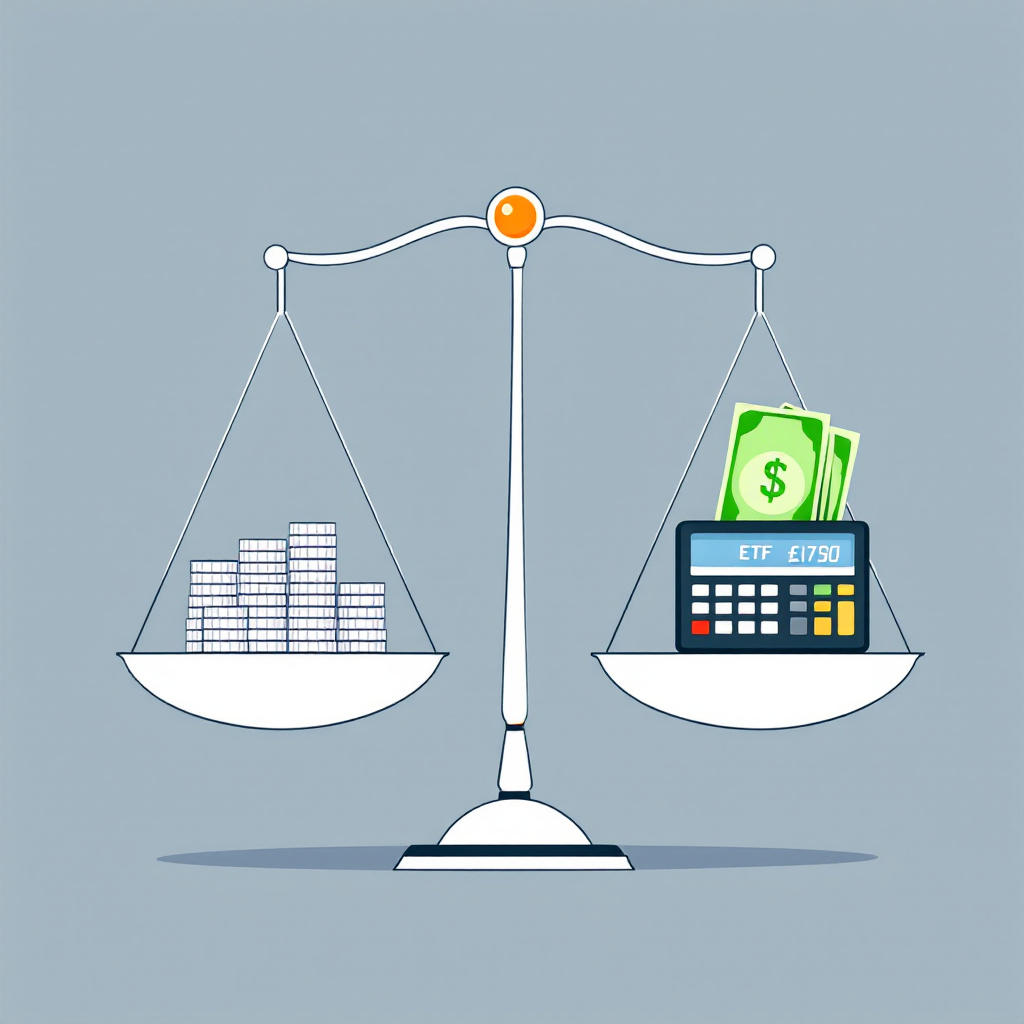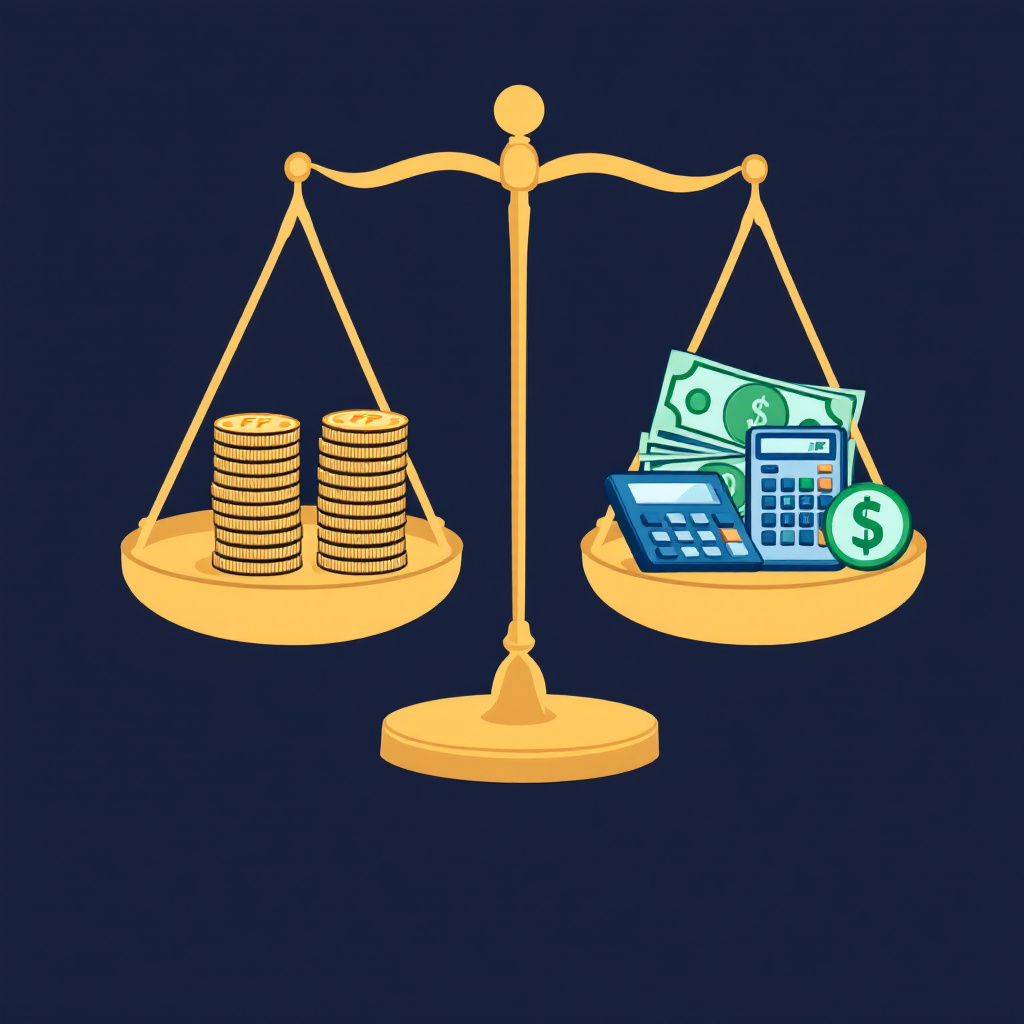Cost and Tax Implications: Navigating the World of ETFs and Mutual Funds
Ready to dive into the captivating realm of investing? With so many avenues to explore, it’s all too easy to get swept away. Enter ETFs (Exchange-Traded Funds) and mutual funds, two heavyweights in the investment sphere. Deciding between them can feel like choosing between an all-you-can-eat buffet and a fine-dining experience—a tough call indeed! As you weigh your options, it’s crucial to consider the cost and tax implications that accompany each. In this article, we’ll untangle these complexities, ensuring you make savvy, cost-effective decisions tailored to your investment goals.
An Introduction to ETFs and Mutual Funds
Let’s kick things off with a brief primer on these investment vehicles. At their core, both ETFs and mutual funds pool money from multiple investors to purchase a diversified portfolio of stocks, bonds, or other assets. The fundamental difference lies in how they’re bought and traded:
- ETFs: These are traded on stock exchanges, similar to individual stocks. Their prices fluctuate throughout the day based on market demand.
- Mutual Funds: These are priced once a day, after markets close, based on the fund’s net asset value (NAV).
While their structures might remind you of a banana split (with ETFs being the ice cream and mutual funds the bananas), their cost structures and tax implications present unique considerations for investors.

Diving into Cost Structures
ETF Costs: A Competitive Edge
Many investors are drawn to ETFs due in part to their low expense ratios. Because ETFs typically follow a passive management style, tracking a specific index, they’re often cheaper to operate than their mutual fund counterparts. Here’s what you can expect:
- Management Fees: Generally lower than mutual funds, ETFs’ management fees often hover between 0.1% to 0.75% of assets under management.
- Commissions and Spreads: Buying and selling ETFs may incur brokerage commissions. Additionally, the bid-ask spread—a gap between what buyers are willing to pay and sellers ask for—can also cut into returns.
Mutual Fund Costs: A Closer Look
Now, if mutual funds were a dish, they’d be your classic, hearty stew—filling but often pricier. The costs associated with mutual funds include:
- Management Fees: Actively managed mutual funds, where fund managers make investment decisions to beat the market, incur higher fees. These can range from 0.5% to 2.5% of assets managed.
- Sales Loads: Some mutual funds impose sales charges or loads when you buy or sell shares. These can be front-end (charged upfront) or back-end (charged when you sell), ranging from 3% to 8.5%.
- 12b-1 Fees: An annual fee for marketing and distribution expenses, typically up to 1% of a fund’s net assets.
Given these costs, it’s no wonder many a penny-wise investor leans toward ETFs. But before you jump ship, tax implications await further scrutiny.
Exploring the Tax Landscape
ETFs and Tax Efficiency
ETFs are often hailed for their tax efficiency due to their unique structure and in-kind creation/redemption process. When it comes to cost and tax implications, here’s how ETFs shine:
- Low Capital Gains Distributions: Because ETFs don’t need to sell securities to meet redemptions like mutual funds, they typically have fewer taxable events.
- Flexibility in Tax-Loss Harvesting: ETF investors can strategically sell holdings to realize losses, offsetting taxable gains elsewhere.
Mutual Funds and Tax Considerations
On the flip side, mutual funds, despite their diverse offerings, carry tax consequences akin to wishbone wish-granting—a mixed bag. Here’s why:
- Capital Gains Distributions: When mutual fund managers sell securities within the fund, shareholders must pay capital gains taxes—often with little control over timing.
- Dividend Taxes: Dividends distributed to mutual fund shareholders are taxable, adding to an investor’s tax obligations.
In the great investment race, ETFs often grab the gold medal in tax efficiency. But hold your horses! Investors should also ponder their personal tax situations and preferences.
Weighing the Pros and Cons
While ETFs and mutual funds each come with their own set of charms and hurdles, your choice boils down to a game of priorities. Here’s a quick breakdown:
ETFs: When to Lean In
- If you value tax efficiency and low costs.
- If you prefer flexibility in trading.
- If you’re keen on index investing.
Mutual Funds: When to Go the Distance
- If you prioritize professional management.
- If you’re eyeing niche market strategies.
- If you desire automatic investment options, like dollar-cost averaging.
These aren’t hard-and-fast rules; rather, they serve as guidelines in researching your options and understanding the cost and tax implications lurking in the shadows.
Strategies for the Savvy Investor
To navigate these waters, why not channel your inner strategist? Here are some investment strategies that factor in both cost and tax implications:
- Asset Location Optimization: Place tax-inefficient investments, like high-dividend mutual funds, in tax-advantaged accounts (IRAs, 401(k)s) and tax-efficient investments like ETFs in taxable accounts.
- Diversification Across Accounts: Mix and match ETFs and mutual funds across your entire portfolio to optimize costs and tax burdens.
- Regular Portfolio Rebalancing: Regular rebalancing keeps your asset allocation aligned with your investment goals, potentially realizing tax-loss harvesting opportunities.
The Final Lap: Making a Choice
Adventurer, you’ve reached the crux of the matter. When faced with choosing between ETFs and mutual funds, examine the landscape through the lens of both cost and tax implications. Consider:
- Your risk tolerance and investment goals.
- Your tax situation and potential liabilities.
- The cost structures and their impact on your returns.
Ultimately, the choice must be as individualized as your taste in ice cream—rocky road versus vanilla bean, anyone?
A wise investor seizes the opportunity to familiarize themselves with every facet of the investment world. Decoding the cost and tax implications firsthand allows you to make informed, mindful decisions. Go ahead and delve into ETFs, mutual funds, or a lush combination of both. Your future self will surely thank you when your investment odyssey bears fruit, jubilantly celebrating your acumen.
Frequently Asked Questions
What are the main differences in fees between ETFs and mutual funds?
ETFs often carry lower expense ratios compared to mutual funds due to their passive management style. Mutual funds, especially actively managed ones, have higher fees, including sales loads and 12b-1 fees. These additional costs are associated with paying fund managers to make investment decisions aiming to outperform the market.
How do tax implications differ between ETFs and mutual funds for an investor?
ETFs are generally more tax-efficient than mutual funds due to their structure, which allows fewer taxable events through in-kind transfers. Mutual funds, on the other hand, may trigger more frequent capital gains distributions, which investors must pay taxes on, potentially at higher rates.
Can I use ETFs for tax-loss harvesting?
Yes, ETFs can be effective tools for tax-loss harvesting. This strategy involves selling ETFs at a loss to offset capital gains taxes from other profitable investments, thereby reducing your overall tax liability. It’s an efficient method to maintain your investment strategy while managing taxes.
Why do mutual funds distribute capital gains more frequently than ETFs?
Mutual funds typically sell securities within their portfolio to accommodate redemptions or achieve investment targets, resulting in capital gains distributions to shareholders. Conversely, ETFs use a creation/redemption mechanism that minimizes actual sales of securities, leading to fewer taxable events.
What is the importance of understanding cost and tax implications when investing?
Understanding cost and tax implications is vital for optimizing your investment returns. Lower costs directly enhance net returns, while tax efficiency can significantly impact your overall investment gains. Knowledge of these factors informs better decision-making, aligning strategies with personal financial goals and tax situations.

